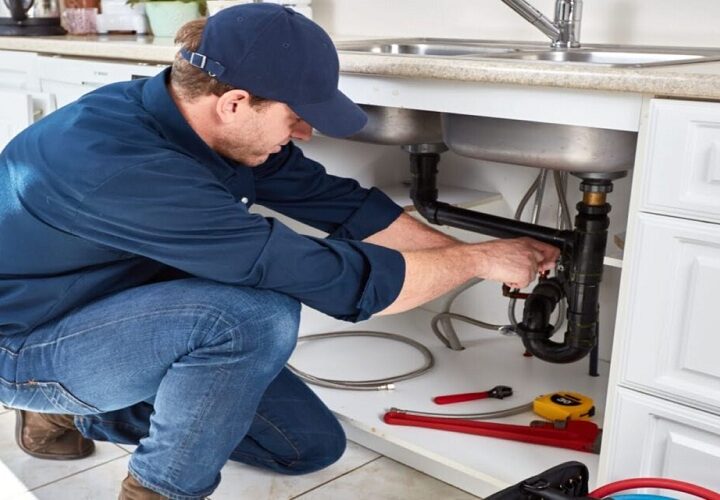
Photo Credit: BCI/Vibhor Yadav Location: Kodinar, Gujarat, India. 2019. Description: BCI Farmer Vala Gopalbhai Nathabha getting dressed in personal protective equipment (PPE) before applying pesticides.
Good pest management strategies allow for continuous monitoring and analysis of pest problems, which promotes more efficient use of inputs. This fact sheet explains the impact of pesticides on water quality and how an integrated pest management plan can help improve your bottom line and reduce environmental risk.
How do pesticides affect the environment?
When pesticides are used to control a particular insect or weed species, beneficial insects and plants may also be adversely affected if they come into direct contact with these pesticides. Additionally, pesticides can harm beneficial organisms through a process called biomagnification. It is the increase in the concentration of a chemical in an organism over time, compared to the concentration of the chemical in the environment.
Biomagnification occurs when a pesticide does not dissolve quickly. As insects, birds and animals eat contaminated food, the chemical builds up in their body. At each step of the food chain, increasing amounts of pesticides are ingested. This process continues, so that the animals are adversely affected or are unfit for consumption.
Management Best Practices
Sustainable agriculture requires maintaining soil and water quality. Certain agricultural practices can cause environmental damage, which can have consequences for urban as well as rural areas. Many of the potential negative effects on agriculture can be greatly reduced by using best management practices . These are agricultural practices that incorporate the most up-to-date knowledge about soil and water conservation without having to sacrifice productivity.
Water follows a continual cycle.. Producers and consumers, urban and rural dwellers, and the public and private sectors all need to use water wisely to ensure that this resource is maintained for others. Best management practices are one way the agricultural sector can help preserve water quality.
Description of this image follows.
Even if the concentrations of pesticides in water are very low, they can increase at each stage of the food chain. The contaminated water is trapped in the cells of the algae which are eaten by water fleas, which are in turn eaten by minnows, which serve as food for large fish, which are ultimately eaten by humans and other mammals.
How do pesticides get into water?
Pesticides can enter ground and surface water sources through all components of the water cycle. Characteristics such as solubility, volatility, ability to decompose and degree of attachment to soil particles all influence a pesticide’s potential to be carried in water.
Soluble pesticides can seep through soil and reach groundwater. Volatile pesticides can be dispersed in the air and deposited elsewhere. However, some pesticides are strongly bound to soil particles, which means they are less likely to end up in water. Pesticides can also reach surface water sources directly through spills or the use of improper chemical spraying techniques.
What is Integrated Pest Management and why use it?
Over time, most pests adapt to pest control products, especially when a particular product is used exclusively. Thus, globally, hundreds of pest species have developed resistance to various pesticides. Overuse of a particular pest control product can also result in one pest being replaced by another. These facts, along with the loss of some existing pesticides due to more stringent regulations, highlight the need to use the widest possible range of pest control products.
The main objective of an LIR system is to keep pest population density below the level that results in economic losses. It is also an important step to prevent the development of pesticide resistance.
LIR systems must be adaptable to changes in the environment, agricultural practices or economic climate. Due to climate and pest variability, LIR systems are usually specific to a particular region or type of crop. LIR systems include three important components, including data collection, threshold determination, and control measures.
Regular monitoring of cultivated fields is essential to estimate the concentration of harmful insects and their natural enemies and to determine the proliferation of weeds or diseases in a crop. Systematic scouting enables pest control in a timely manner so that it is economically and environmentally responsible.
Monitoring includes taking representative samples of plants, insects and weeds to get an accurate picture of the pest problem. Examples of ways to estimate pest concentration include direct visual counting of pests or measuring the extent of crop damage.
Since the development of certain insects, diseases or weeds is linked to temperature and humidity, weather monitoring can be used to predict the best time to implement pest management practices.
In any LIR system, two pest-related thresholds must be determined. First there is the threshold of economic harm, ie the value at which the abundance of pests is equal to the cost of the treatment. Second, there is the treatment or action threshold, ie the value at which the abundance of pests justifies the use of control measures. The intervention threshold must be lower than the threshold of economic harmfulness to allow the implementation of control measures.

 Five Signs to Look for When Inspecting Your Property for Termites
Five Signs to Look for When Inspecting Your Property for Termites  Understanding and Managing Ant Infestations
Understanding and Managing Ant Infestations  A Beginner’s Guide to Pest Control in Brisbane: Keeping Your Home Pest-Free
A Beginner’s Guide to Pest Control in Brisbane: Keeping Your Home Pest-Free  The Unmatched Benefits of Sheepskin Rugs
The Unmatched Benefits of Sheepskin Rugs  Creating a Serene Atmosphere with Blue Persian Rugs
Creating a Serene Atmosphere with Blue Persian Rugs  The Original Western Australian Furniture Warehouse – The Allure of Perth Stores
The Original Western Australian Furniture Warehouse – The Allure of Perth Stores  The Benefits of Regular Plumbing Inspections
The Benefits of Regular Plumbing Inspections